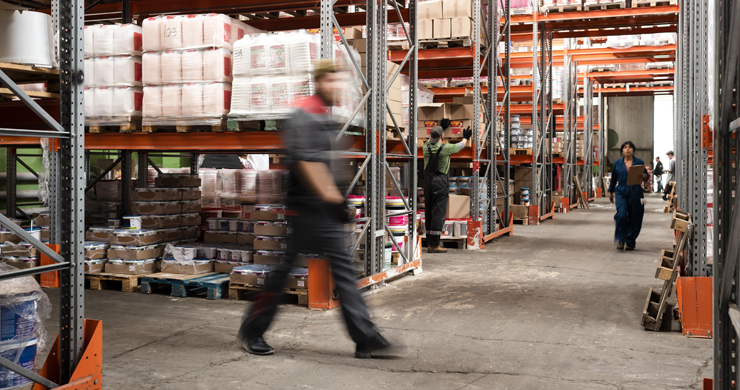Warehouse management is a critical part of the supply chain and its efficiency has a direct impact on customer satisfaction. Inefficient management can cause delays, errors and quality issues that negatively affect the customer experience. In this article, we look at the repercussions of poor warehouse management and how it can damage your relationship with your customers.
Delivery delays
- Common problems: Delivery delays are one of the main consequences of inefficient warehouse management. They can be caused by inadequate inventory planning, errors in picking and packing, or internal logistics problems.
- Customer impact: Delays frustrate customers and can lead to loss of trust. Customers expect to receive their orders on time and any delay can result in a negative experience that affects their perception of the company.
Ordering errors
- Common problems: Ordering errors, such as shipping incorrect products or wrong quantities, are often the result of poor inventory control, lack of staff training or outdated management systems.
- Customer impact: Customers who receive incorrect products or in the wrong quantities must go through the return and replacement process, leading to inconvenience and reduced satisfaction. These errors can lead customers to seek other, more reliable options.
Low product quality
- Common problems: Ineffective warehouse management can result in damaged or poor quality products due to improper storage, inadequate handling or uncontrolled environmental conditions.
- Customer impact: Receiving damaged or defective products negatively affects the customer experience and can lead to complaints, returns and ultimately loss of customers. The perception of quality is compromised, affecting the company’s reputation.
Lack of product availability
- Common problems: Out-of-stocks, also known as stockouts, can be the result of poor inventory management, inadequate demand forecasting or supply chain problems.
- Customer impact: Customers who do not find the products they are looking for at the right time may be disappointed and seek alternatives from competitors. This affects not only satisfaction, but also sales and long-term loyalty.
Poor communication
- Common problems: Poor warehouse management is often accompanied by poor communication, both internally and with customers. Lack of updates on order status, delayed problem resolution and lack of transparency are common examples.
- Customer impact: Customers value clear and timely communication. Lack of information or incorrect information about their orders can lead to frustration and distrust. Keeping customers informed is crucial to a positive experience.
Additional costs
- Common problems: Additional costs resulting from poor warehouse management include expenses for returns, replacements, expedited shipping to correct errors, and inventory loss. These costs not only affect profitability, but can also be reflected in the final price of products.
- Customer impact: Customers may be reluctant to pay higher prices due to unnecessary additional costs. In addition, the perception of a company that mismanages its operations can lead to the impression of inefficiency and unprofessionalism.
How to improve warehouse management for better customer satisfaction
- Implementing advanced technology: Adopting a Warehouse Management System (WMS) can optimize all warehouse operations. From real-time inventory control to automation of picking and packing processes, a WMS improves accuracy and efficiency, reducing errors and delays.
- Ongoing staff training: Investing in staff training and development is crucial. A well-trained team that is up-to-date on warehouse management best practices is better able to manage operations efficiently and solve problems quickly.
- Inventory optimization: Using demand forecasting and inventory turnover techniques can help maintain optimal stock levels. This ensures product availability and reduces the possibility of stockouts and overstocks.
- Improving communication: Establishing clear and efficient communication channels both within the warehouse and with customers is critical. Informing customers about the status of their orders and providing regular updates improves transparency and trust.
- Monitoring and continuous improvement: Implementing a system of continuous monitoring and analysis of warehouse operations allows identifying areas for improvement and proactively taking corrective actions. Continuous improvement is key to maintaining efficiency and customer satisfaction over the long term.
Conclusion
Warehouse management plays a crucial role in customer satisfaction. Errors, delays and quality issues can detract from the customer experience and negatively affect a company’s reputation. Implementing advanced technologies, training staff, optimizing inventory and improving communication are essential steps to improve warehouse management and, ultimately, customer satisfaction. Adapting and evolving with the best available practices and technologies is crucial to maintaining a competitive advantage in today’s marketplace.
You may also be interested in…





